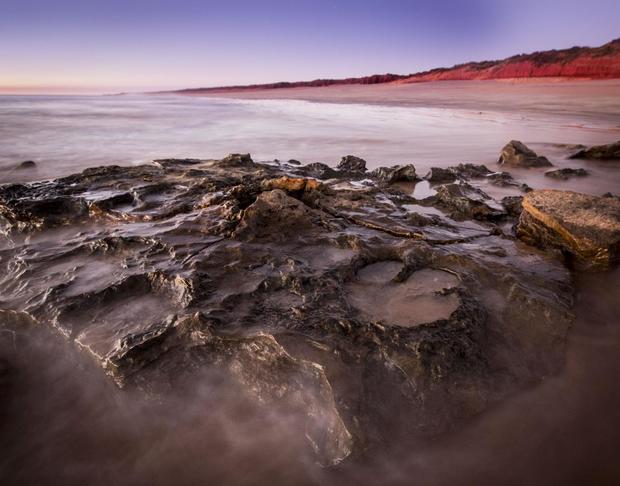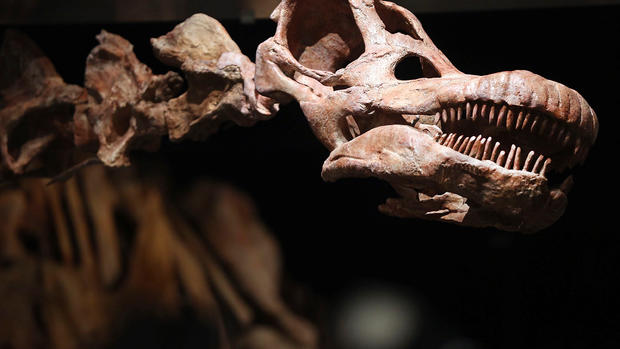Dinosaur footprint may be largest ever discovered
Researchers may have uncovered the largest dinosaur footprints ever found, measuring in at five feet, nine inches long and etched into the Earth millions of years ago by massive four-legged sauropod dinosaurs.
The footprints were discovered as part of a five-year excavation along a 16-mile stretch of coastline in Western Australia. Paleontologists say they’ve found between 11 and 21 distinct types of dinosaur tracks belonging to a wide range of prehistoric creatures: long-necked herbivorous (plant-eating) sauropods, two-legged herbivorous ornithopods, and armored dinosaurs.
Found in rocks dating back 127 million to 140 million years on Australia’s Dampier Peninsula, the footprints collectively represent “the most diverse assemblage of dinosaur tracks in the world,” researchers said. They published their findings in the Journal of Vertebrate Paleontology.
“It’s such a magical place — Australia’s own Jurassic Park, in a spectacular wilderness setting,” lead author Dr. Steve Salisbury said in a statement.
The story of the discovery is almost as interesting as the discovery itself, and speaks to the high-stakes nature of paleontology in an era of rapid environmental transformation and land development.
The path to discovery traces back to 2008, when the Australian government selected the area of Walmadany as the site for a $40 billion liquid gas processing facility. That prompted the indigenous population in the area, the Goolarabooloo people, to reach out to paleontologists to inspect what they’d long believed were dinosaur tracks in their communities, according to researchers. The Goolarabooloo people are known to be the long-time custodians of the remote region.
“We needed the world to see what was at stake,” Goolarabooloo Law Boss Phillip Roe explained in a statement. In one of the photos released by the research team, another Goolarabooloo elder, Richard Hunter, is shown lying down next to a sauropod footprint nearly as long as he is tall.
Paleontologists, joining forces from the University of Queensland’s School of Biological Sciences and James Cook University’s School of Earth and Environmental Sciences, worked from 2011 to 2016 to excavate the area. The political context made the project “particularly intense,” Dr. Salisbury said.
Researchers breathed a sigh of relief in the middle of their work in 2013, when the area was granted National Heritage status and plans for the gas project collapsed.
Now, sharing his team’s findings with the world for the first time, Dr. Salisbury calls the area the “Cretaceous equivalent of the Serengeti” — the wildlife park teeming with animals in Africa.
The newly discovered footprints are believed to be “considerably” older than most dinosaur footprints found on the Australian continent, which date back between 90 and 115 million years old — making this the first evidence of dinosaurs from the first half of the Early Cretaceous Period in Australia, researchers said.





